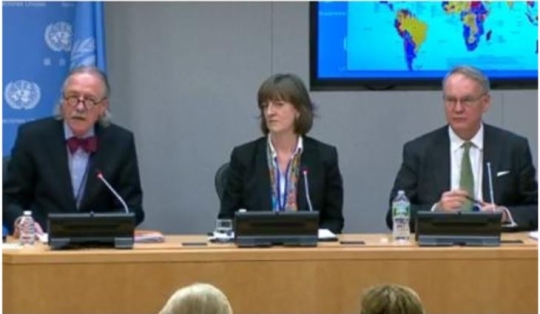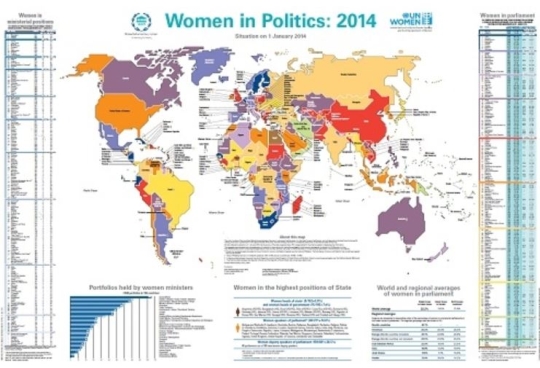IPU·UN Women unveiled the Women in Politics Map 2014
21.8% of women parliamentarians
Use of temporary special measures such as quotas
Gender equality is likely to be achieved in less than 20 years

The Women in Politics Map 2014 showed that the percentage of women parliamentarians was at a record 21.8% globally. With 15.7%, Korea ranked 91st out of 189 countries.
According to the Map released by IPU and UN Women on March 11(local time), women parliamentarians across 189 countries accounted for a record share of 21.8% as of January 2014, up from 1.5% since last year and 8.7% since 2000 when the first Map was produced.
Along with Ireland, Korea(15.7%) ranked 91st (when joint rankings are ruled out, Korea ranked 113th), lower than United Arab Emirates(17.5%) or Libya (16.5%) and slightly higher than North Korea(15.6%) and Gabon(15.0%). China(23.4%), the U.S.(18.3%), and Japan(8.1%) came in 61st, 85th, and 127th, respectively.
In the ranking of women in parliament, Rwanda(63.8%) topped the list, with 51 out of 80 parliamentarians being women, followed by Andora(50.0%) and Cuba(48.9%). By regions, America(25.2%) outperformed Europe(24.6%) and Africa(18.4%).
As for the percentage of women ministers, Korea(IPU ranking: 67) posted 11.8%, far below the global average of 17.2%. Korea’s actual ranking on the Map was 119, along with Indonesia and East Timor. Nicaragua(57.1%) came in first place, followed by Sweden(56.5%), and Finland(50.0%). By regions, America(22.9%) surpassed Africa(20.4%) and Europe(18.2%).
While countries without a single woman parliamentarian were Micronesia, Palau, Qatar, and Vanuatu, eight countries without a single woman minister included Bosnia and Herzegovina, Lebanon, Pakistan, and Saudi Arabia.
IPU Secretary-General Anders Johnsson said “10 years ago, I predicted that even my children would never see gender parity in parliaments. However, if the current rate of progress continues, we would be able to reach gender equality in parliaments globally in less than 20 years from now.”
He commented “These numbers tell us how far we have come and how far we still have to go. Progress on political participation remains very slow.” Also, he added “Every election is a critical opportunity to make progress towards the increased participation of women as voters and as candidates. One of key strategies to increase the number of women in parliaments is to use temporary special measures such as quotas.”


